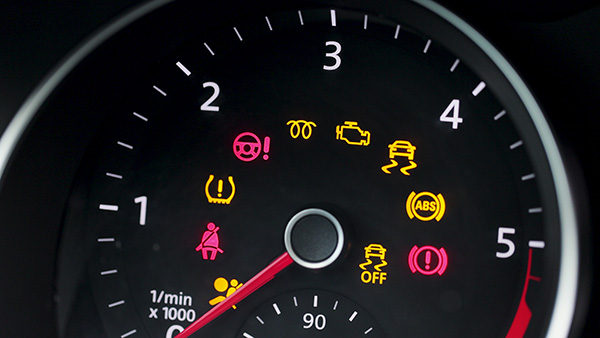
Today’s vehicles rely heavily on sensors to monitor everything from fuel and air mixtures to tire pressure and emissions. These sensors feed real-time data to your car’s computer systems, helping the engine run smoothly and alerting you when something goes wrong. But what happens when one sensor goes bad? In many cases, it doesn’t just cause one light to come on—it can trigger several.
Here’s how a faulty sensor can lead to multiple warning lights and what it means for your vehicle.
The Role of Vehicle Sensors
Modern vehicles contain dozens of sensors, each responsible for tracking a specific function. For example, oxygen sensors monitor emissions, mass airflow sensors track incoming air, wheel speed sensors assist with ABS, and the throttle position sensor helps manage acceleration. All of this information is processed by your vehicle’s computer (often called the ECM or PCM) to ensure proper performance.
When one of these sensors starts to fail, it may provide inaccurate or missing data—prompting the system to throw a warning light or enter a fail-safe mode to protect the engine.
Why Multiple Lights Can Appear
A single faulty sensor can create a ripple effect throughout your vehicle’s systems. For instance, a malfunctioning oxygen sensor may affect fuel-to-air ratios, emissions levels, and catalytic converter performance. That could result in the check engine light, a warning about emissions, and even a notice about fuel efficiency problems.
Similarly, a failing wheel speed sensor may confuse the ABS, traction control, and stability control systems—causing all of those lights to illuminate at once, even if the core issue is just one sensor.
The Check Engine Light: A Common Denominator
When a sensor fails, the check engine light is often the first to appear. But the light itself doesn’t pinpoint the exact issue—it’s a general alert that something’s wrong. That’s why a diagnostic scan is essential. It pulls the trouble codes stored by the vehicle’s computer and identifies which sensor or system is affected.
If your dashboard lights up with multiple alerts, don’t assume your vehicle has several unrelated problems. One faulty input could be the root cause.
Intermittent Sensor Failures
Not all sensor failures are immediate or constant. Some sensors fail intermittently—working fine one day and causing problems the next. That can make it more difficult to trace the issue, especially if the warning lights come and go. You might notice changes in fuel economy, odd shifting behavior, or erratic idle, depending on which system is involved.
Even if the lights disappear temporarily, it’s a good idea to have the codes checked before they reset or are overwritten.
Fixing the Problem the Right Way
Replacing a faulty sensor typically resolves the issue and turns off the related warning lights. However, accurate diagnostics are key. Sometimes, sensors appear faulty because of wiring issues, poor connections, or problems elsewhere in the system. That’s why guessing and swapping parts rarely solves the problem—it can lead to unnecessary repairs and higher costs.
A professional diagnostic scan and system check ensures that the right component is replaced and that all systems return to normal operation.
Premier Automotive Service – Diagnostics You Can Trust in Urbandale, IA
At Premier Automotive Service in Urbandale, IA, we help drivers make sense of confusing dashboard alerts with precise diagnostics and clear solutions. If you’re seeing multiple warning lights or experiencing odd performance symptoms, our team can pinpoint the real issue and get you safely back on the road. Schedule your diagnostic appointment today and let us sort out what your vehicle’s trying to tell you.